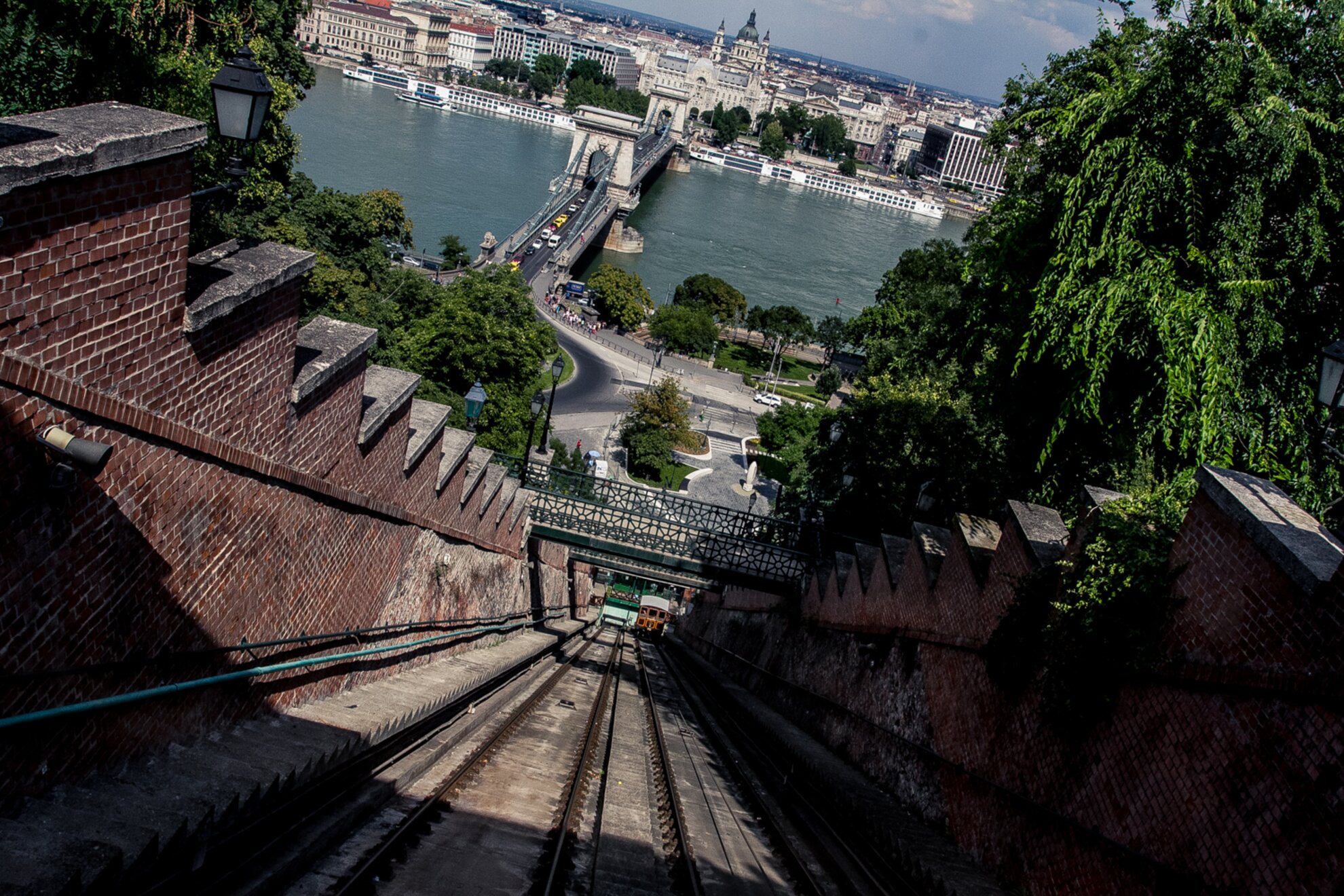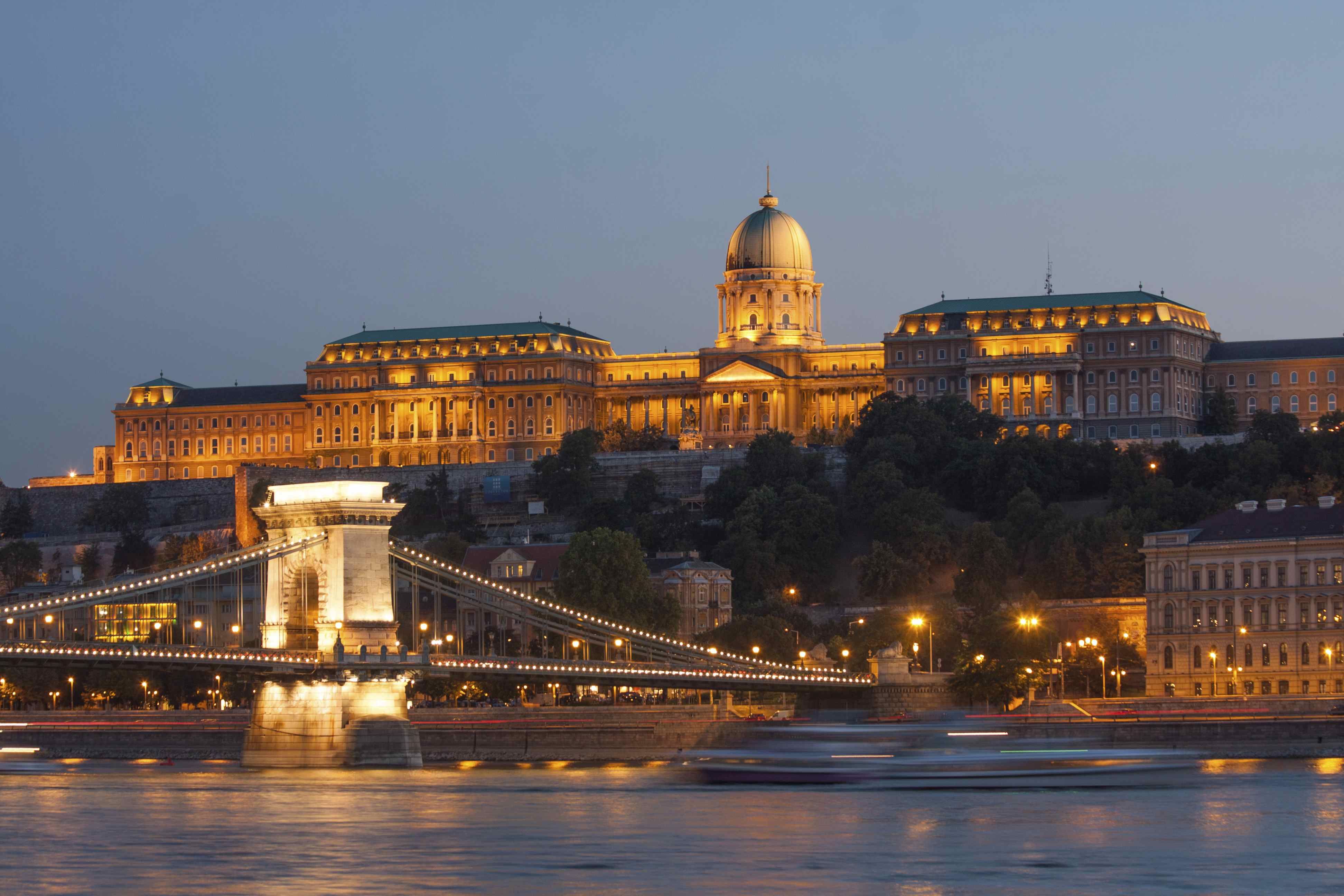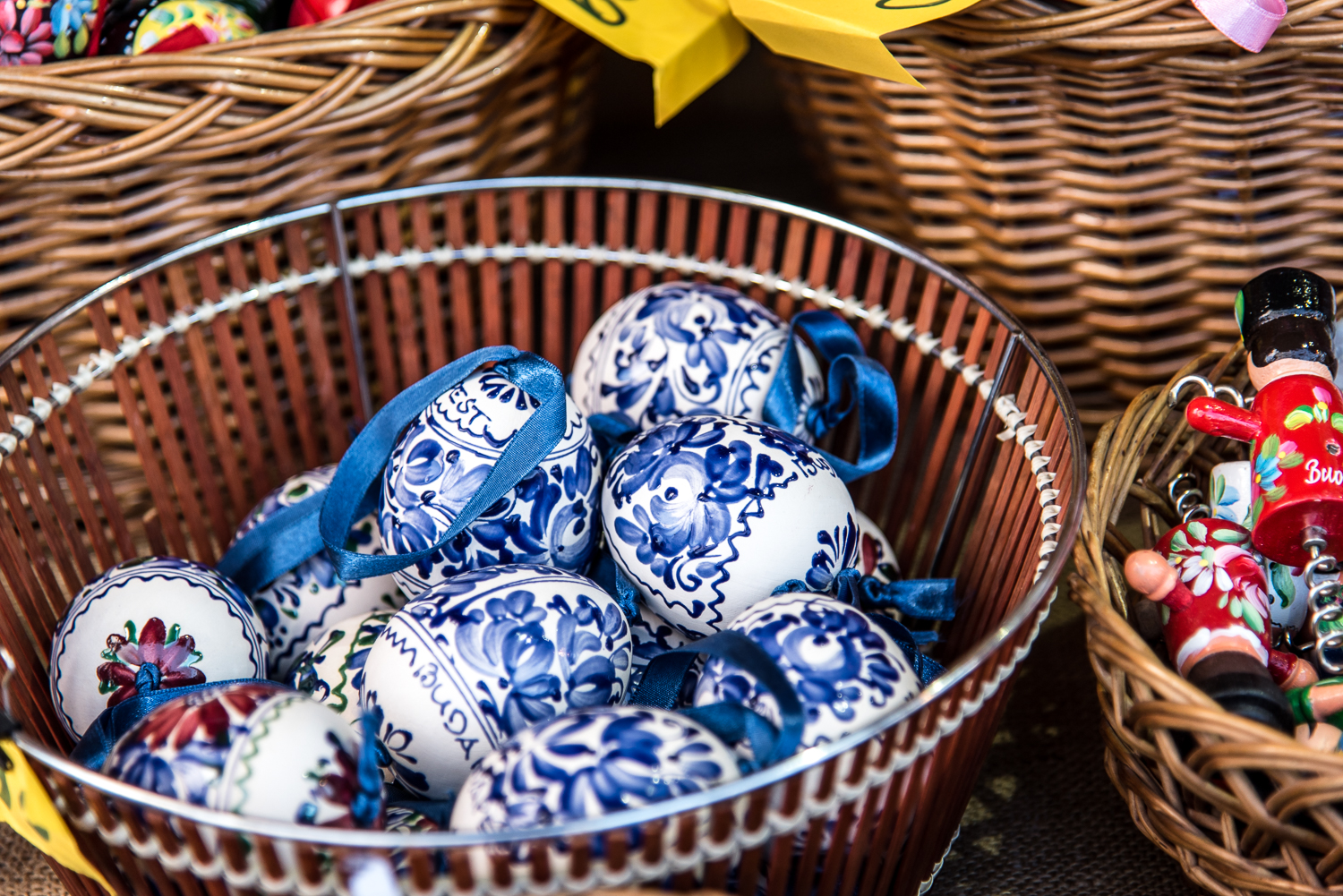Castle Hill has been inhabited since the 13th century, when an influx of new inhabitants took to the high ground there following the Mongol attacks that devastated the population. Buda’s secure position motivated Hungary’s King Béla VI to move the capital from what's now the regional city of Esztergom to this new site. In the centuries that followed, the district became the home of the royal court, and today you can still see the influences from the rule of King Matthias to the Habsburgs through an eclectic mix of renaissance and baroque styles. There are also traces left from the Ottoman occupation, which we can see scattered around Castle Hill.Vienna Gate and Ottoman relicsGetting up to the Vienna Gate (Bécsi Kapú) on the northern end of Castle Hill is the easiest and the least crowded way to enter the complex, and it’s just a short walk from Széll Kálmán Square. You could also take the Castle Bus from this same square as well.
The Vienna Gate is a 1930s reconstruction of the medieval original, which was destroyed during the 1686 Siege of Buda, when the Holy League and the Habsburg army recaptured Hungary from the Turks.
The Turks resided in Buda for over 100 years and echoes of the Ottoman occupation can still be found in this area. Take special care to look at the outer walls here, since the Turks incorporated these fortifications into the original medieval walls. Many of the old bastions around the castle were also built under the Ottoman occupation, including the Anjou Bastion, where you’ll find the memorial to Adburrahman, the last Pasha of Buda, who died aged 70 during the siege.
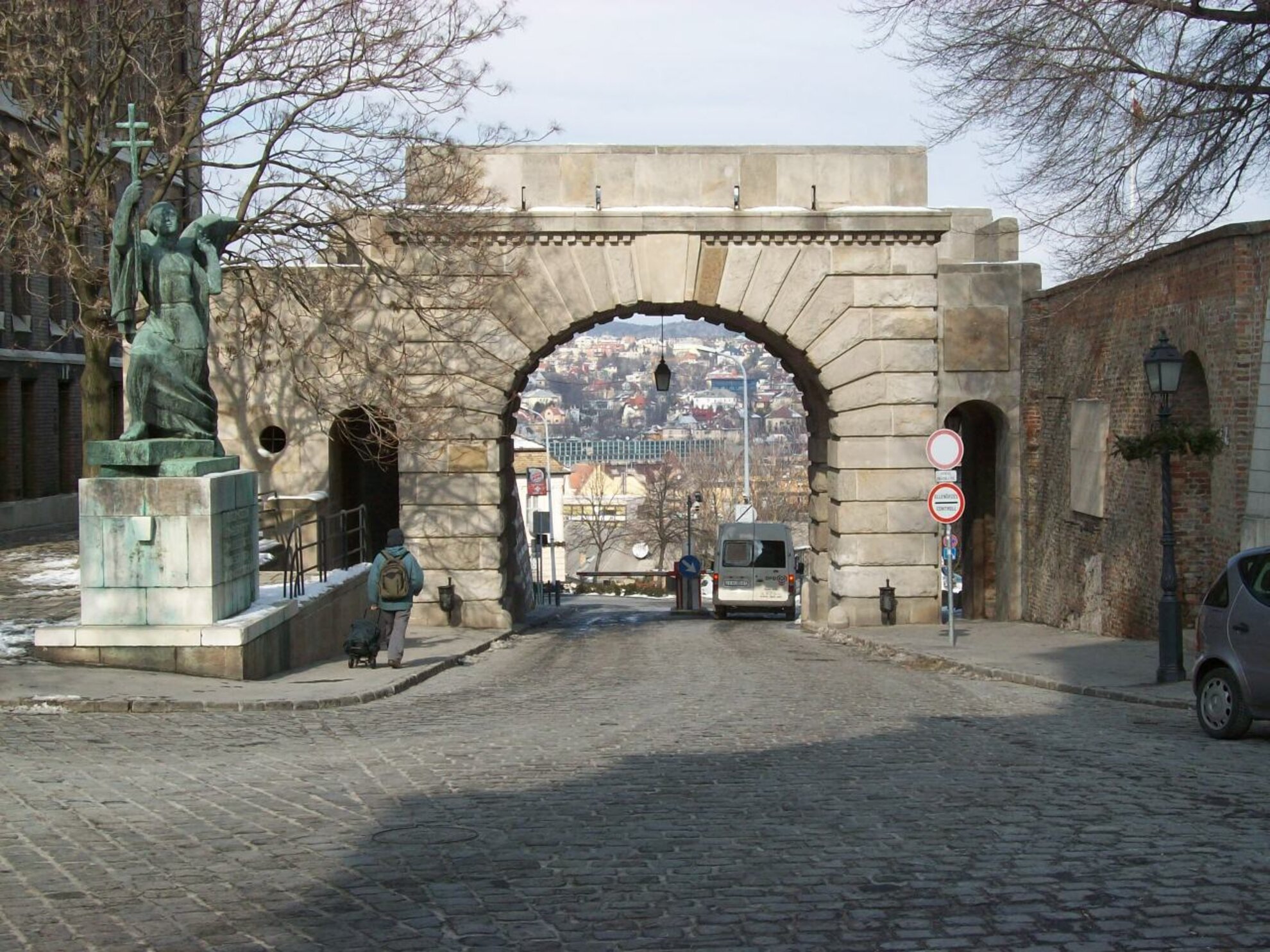
The gothic tower of Kapisztrán SquareA stroll down Petermann Bíró Street brings us to a cobbled square punctuated by its lonely gothic tower belonging to Church of Mary Magdalene. This Romanesque church dates back to the 13th century - one of the original structures of the castle - and was also the only church that was functioning under the Ottoman occupation. Because it was the only place in which Christian services were permitted, Catholics and Protestants had to make the best of the space by holding separate congregations in the nave and in the chancel. Most of the church was damaged during WWII, leading to its demolition in 1952, leaving just the tower behind.
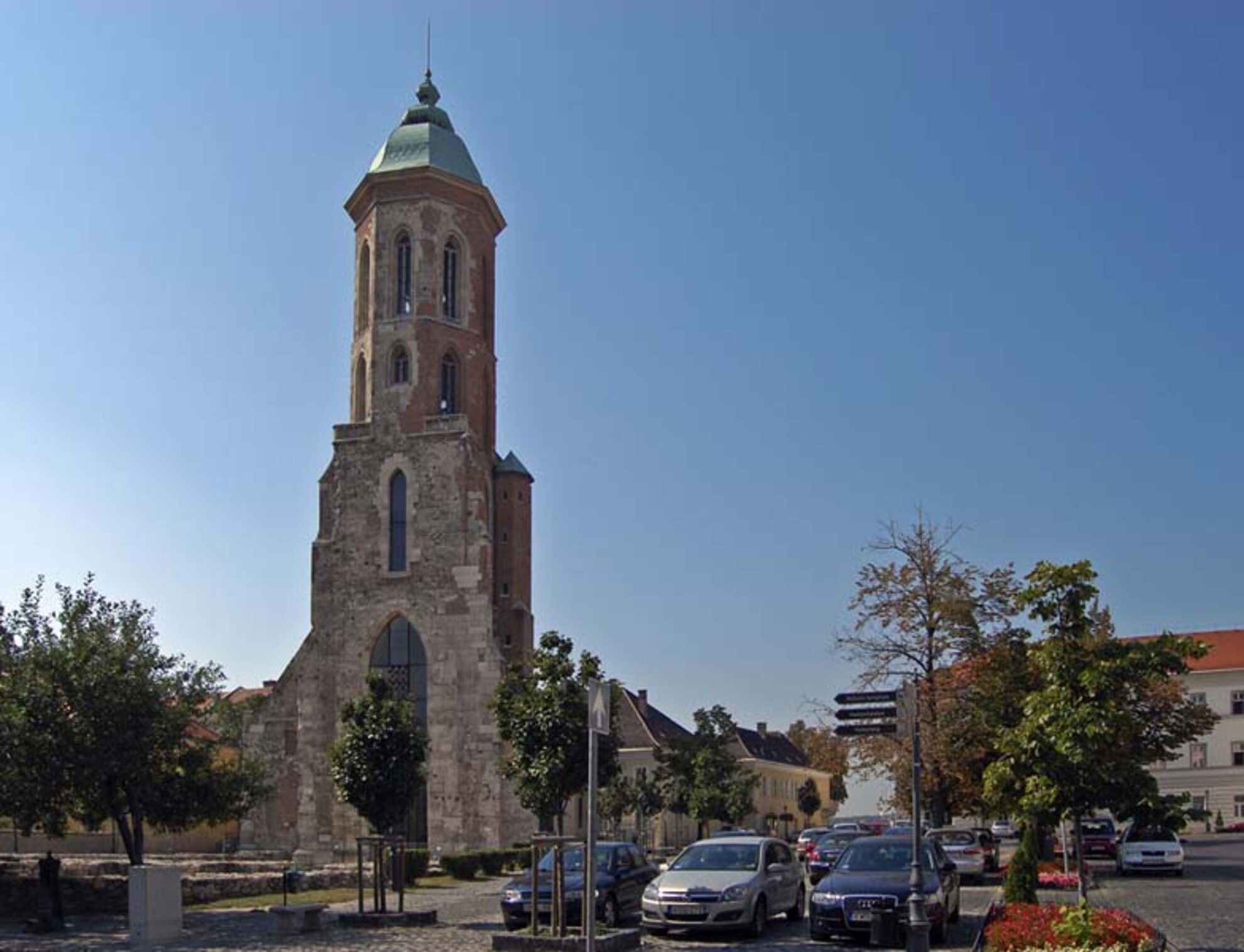
The former Jewish Quarter
We do a small U-turn and head back to Vienna Gate and up Táncsics Mihály Street. Number 26 houses a medieval Jewish prayer house that was discovered in the 1960s during excavations of Castle Hill. King Béla VI had invited Jewish settlers to Castle Hill in a bid to make up for the population loss after the Mongol invasion. This part of the hill became a thriving Jewish Quarter, where even under the Ottoman rule it was renamed “Jewish Street.” In 1686, the Habsburg army massacred most of the Castle Hill’s Jewish population, along with the Turks, following the Battle of Buda. Today, the street is lined with beautiful baroque buildings and quiet cobbled side-streets. You’ll also find the Lutheran Church here. Make sure to stop at number 7, the former Endrődy Palace, where the composer Beethoven once lived!
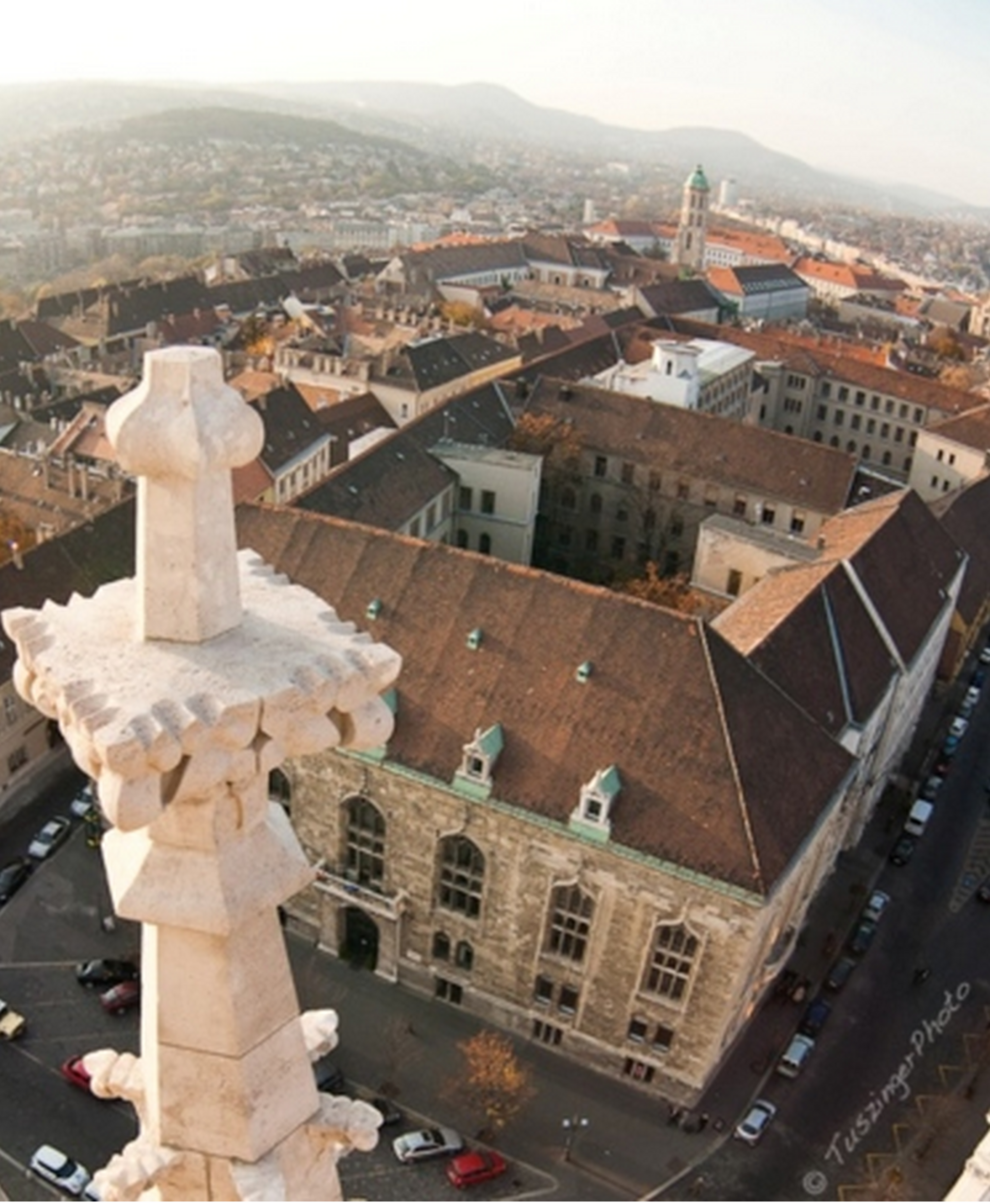
Holy Trinity Square Continuing up Táncsics Mihály, the street spills out into the crowded tourist hub of Holy Trinity Square, which is actually the highest point of the hill. With its multicoloured tiled roof and eclectic design Matthias Church is the centrepiece of the square. Once the site of a 10th century church built by St. King Stephen, today the oldest part of the church dates back to the 1300s. Since then it has become a tapestry of various architectural styles. There is a small fee to enter the church as a tourist.
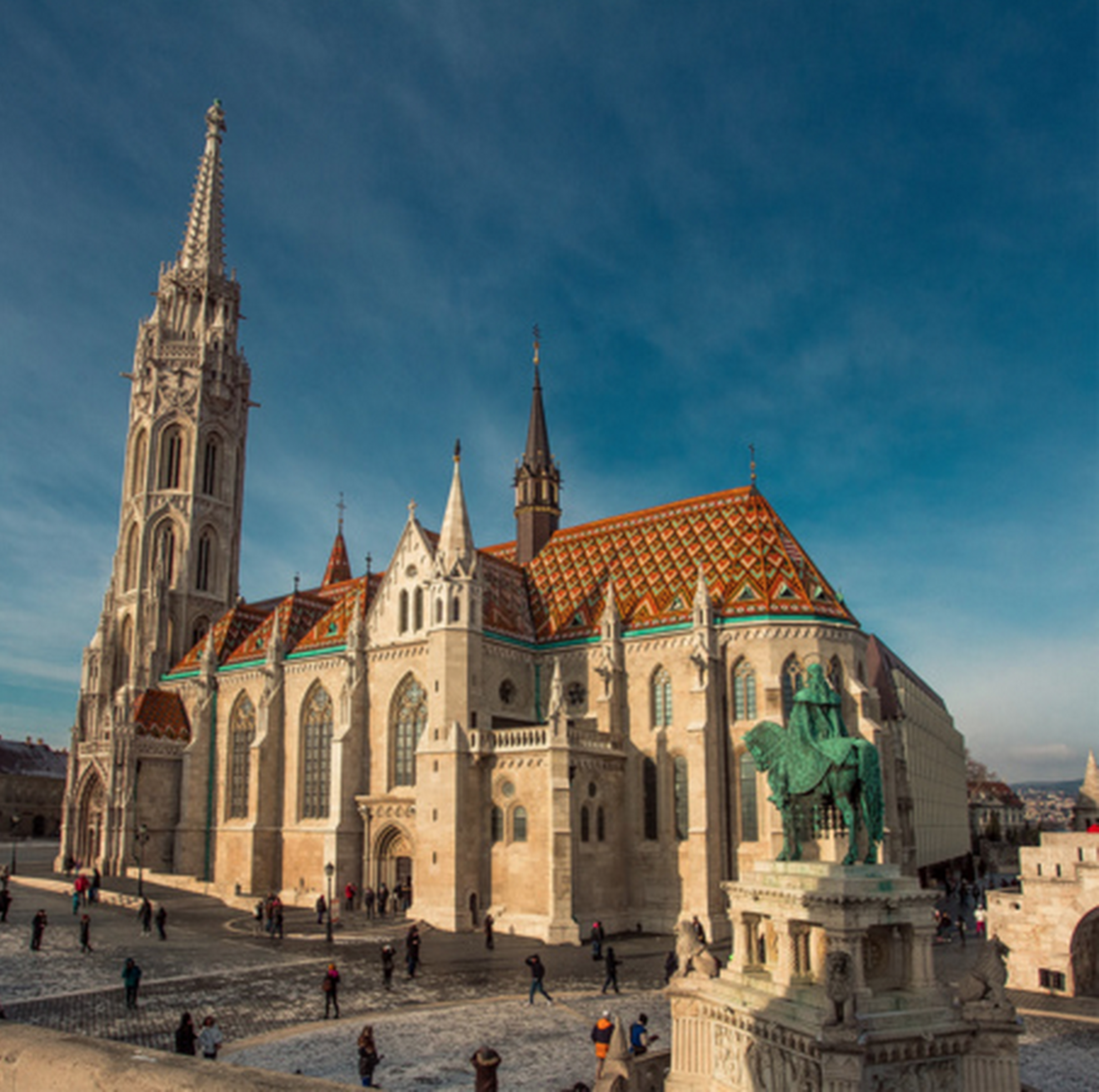
Behind Matthias Church (as you look toward the Danube) you'll see Budapest’s most famous lookout point:
Fishermen’s Bastion. Despite its medieval appearance, it was actually built at the turn of the 20th century. It's one of the most romantic points in the city, especially if you escape the crowds first thing in the morning. To see the Fisherman’s Bastion at its best, head down the spiralling stairs to the park below to catch a view of the spectacular lookout from below, before heading up again. In this way we get to enjoy the winding white stairs, take a look at the sculptures and catch some killer views. Once we’re back in the square, take a look at the 14 metre high baroque statue commemorating the plague.
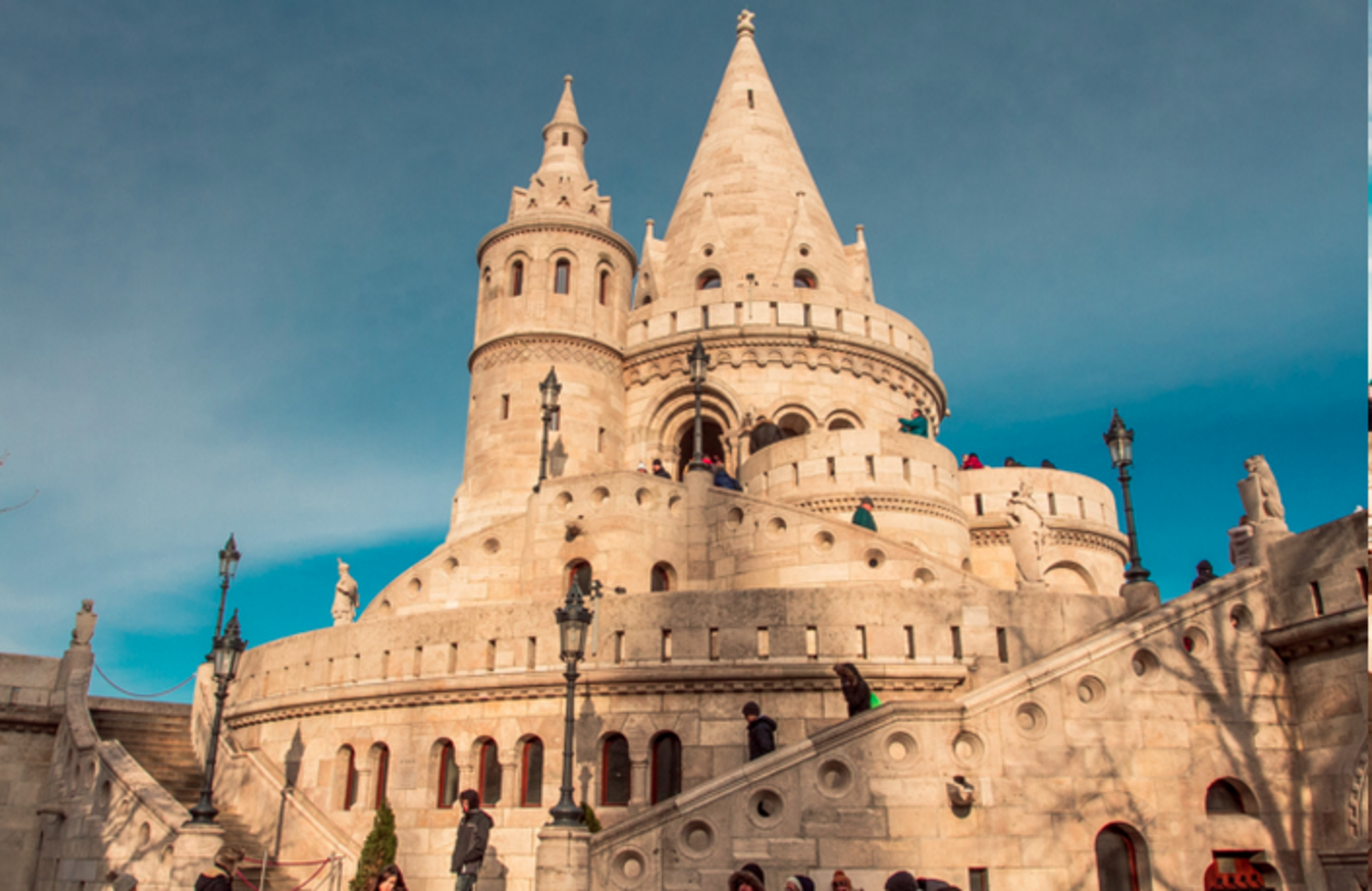
Toward Buda Castle From Holy Trinity Square our walk continues through the busiest part of the hill. The stretch down Tárnok Street brings us into Dísz Square, the hub of the Castle District. You’ll find the buses from Deák Square and Széll Kálmán Square stop and circulate here. This area once housed a large market in the Middle Ages, but today you’ll mostly find touristy shops selling folk art and fridge magnets. Continuing down, we have a view of the famous Buda Castle and excavated medieval ruins.
You'll soon see a big iron gate and a giant bird to its left. The Turul bird is a mythical creature that represents represents power, strength and nobility, and is an important symbol in Hungary.
If you head through the gate pictured below and walk down the stairs, you'll find yourself in a landscaped area with stunning views over the Danube, Pest and Chain Bridge. This is a great photo stop.
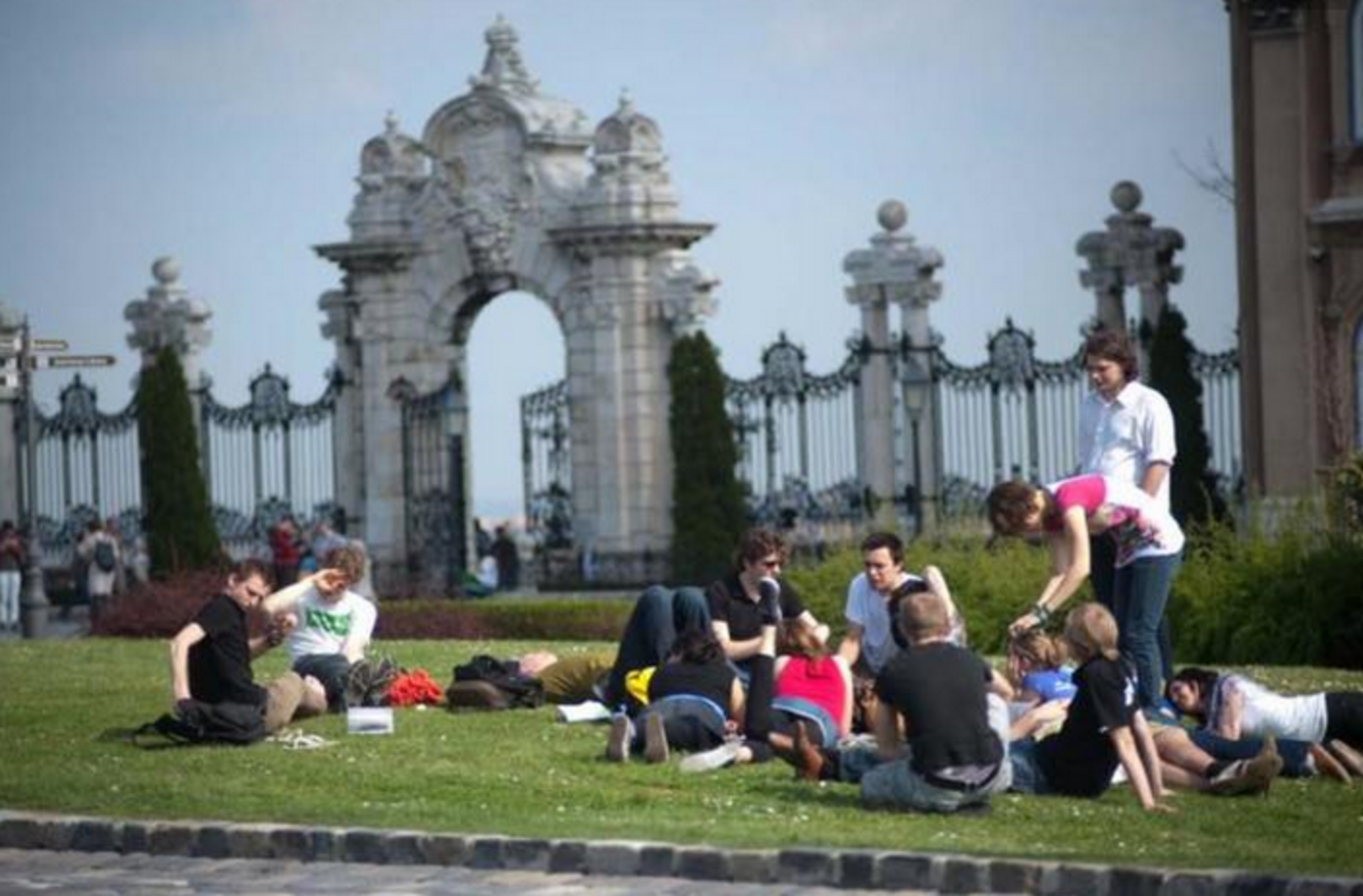
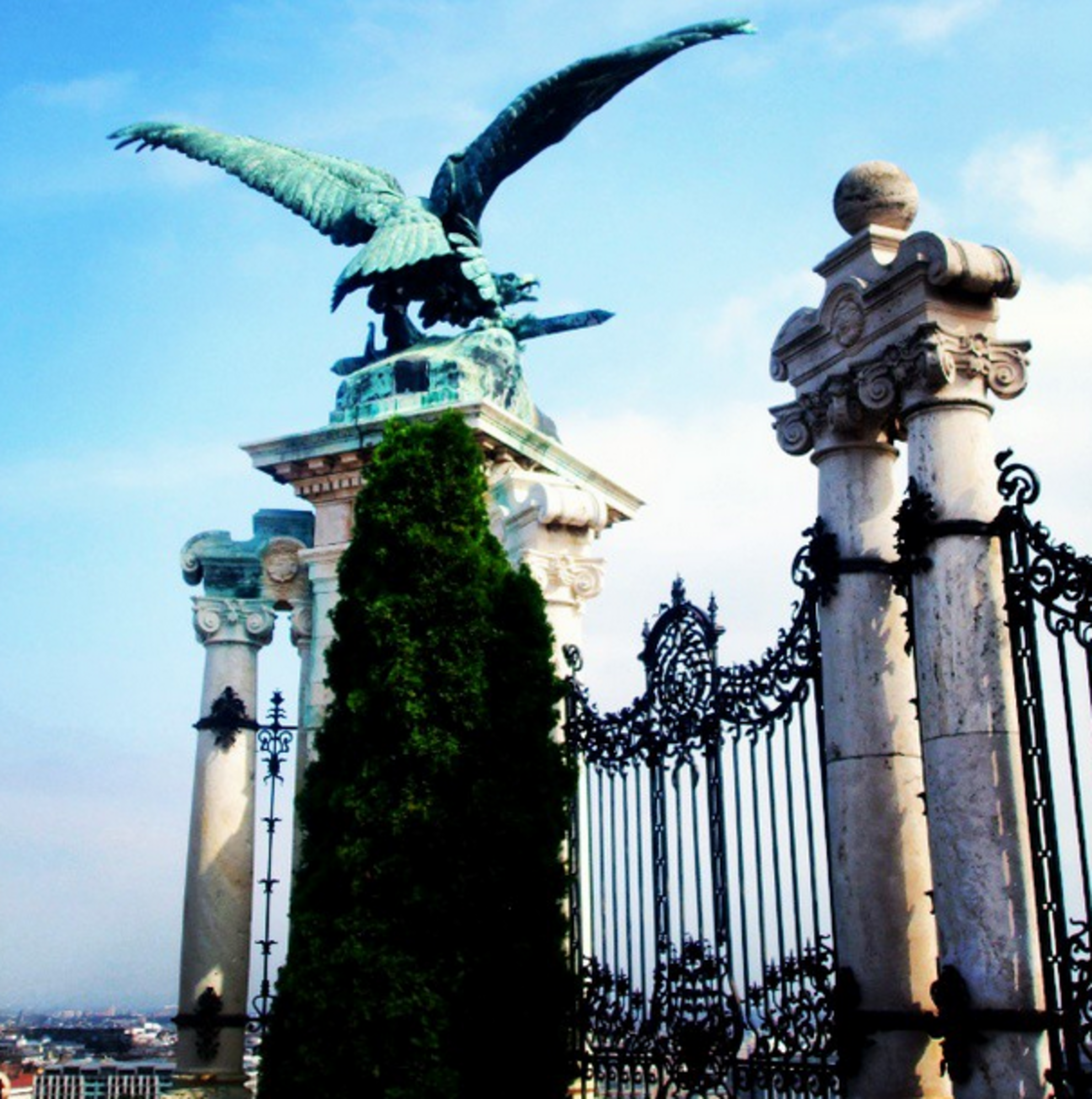
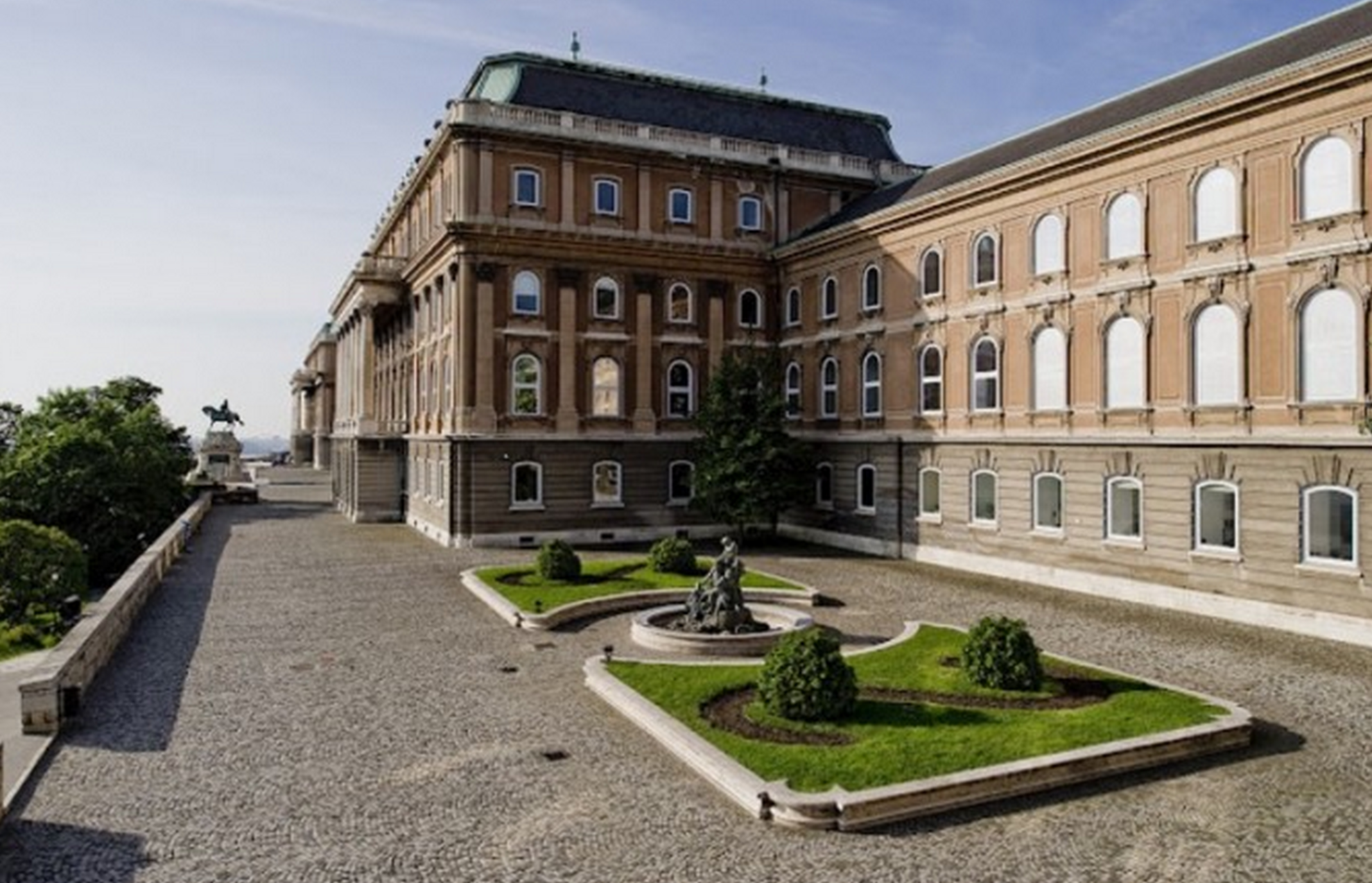
Now we’re going to leave the tourists and explore a secret part of Buda Castle. Beneath the elaborate black iron gate (pictured above), we find a path that marks a pedestrian’s descent, but instead of heading down to the Chain Bridge, we take the turning going right, which starts climbing up again.
This is the old part of the castle called the Great Rondella, which dates back to the time of King Matthias, although it was restored at the end of the 20th century. Here you’ll find triangular shaped gatehouses and conical turrets that capture the castle’s original style before the Habsburg era. At the base of the old gate, we climb up into the courtyard, where you see the back-door entrance to the Budapest History Museum. We go under the arch, and while it feels like you’re heading back to the main part of the castle, we’re going towards a secret walkway that turns back on the left, and skirts the side of the baroque castle on a path hovering above Attila Street with views across to the Buda Hills.
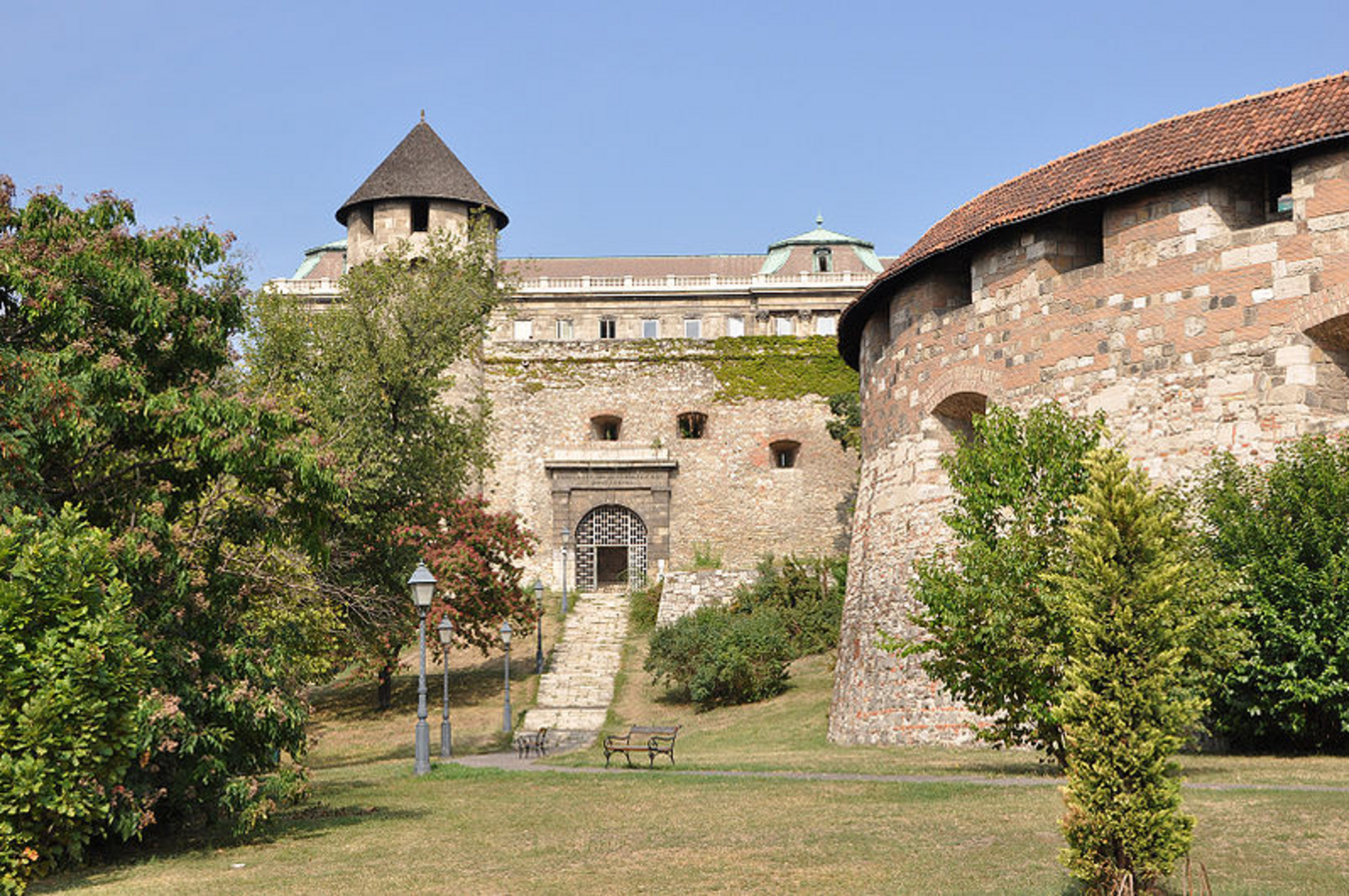
If you've already explored the Buda Palace at another time, you could either finish your walk here by heading down the southern part of the Castle Hill by following the path down under the Rondella’s turreted gateway. If you do, look out for the Ottoman cemetery near the bottom.
For those who want to see more of the Castle District continue with us...Exploring the Buda PalaceIf you head back to Dísz Square, where we were before our mini-detour, head down the right side of the Buda Palace until you see the famous Matthias Well (pictured below), a fountain featuring King Matthias and his hunting party. This is another good photo opportunity.
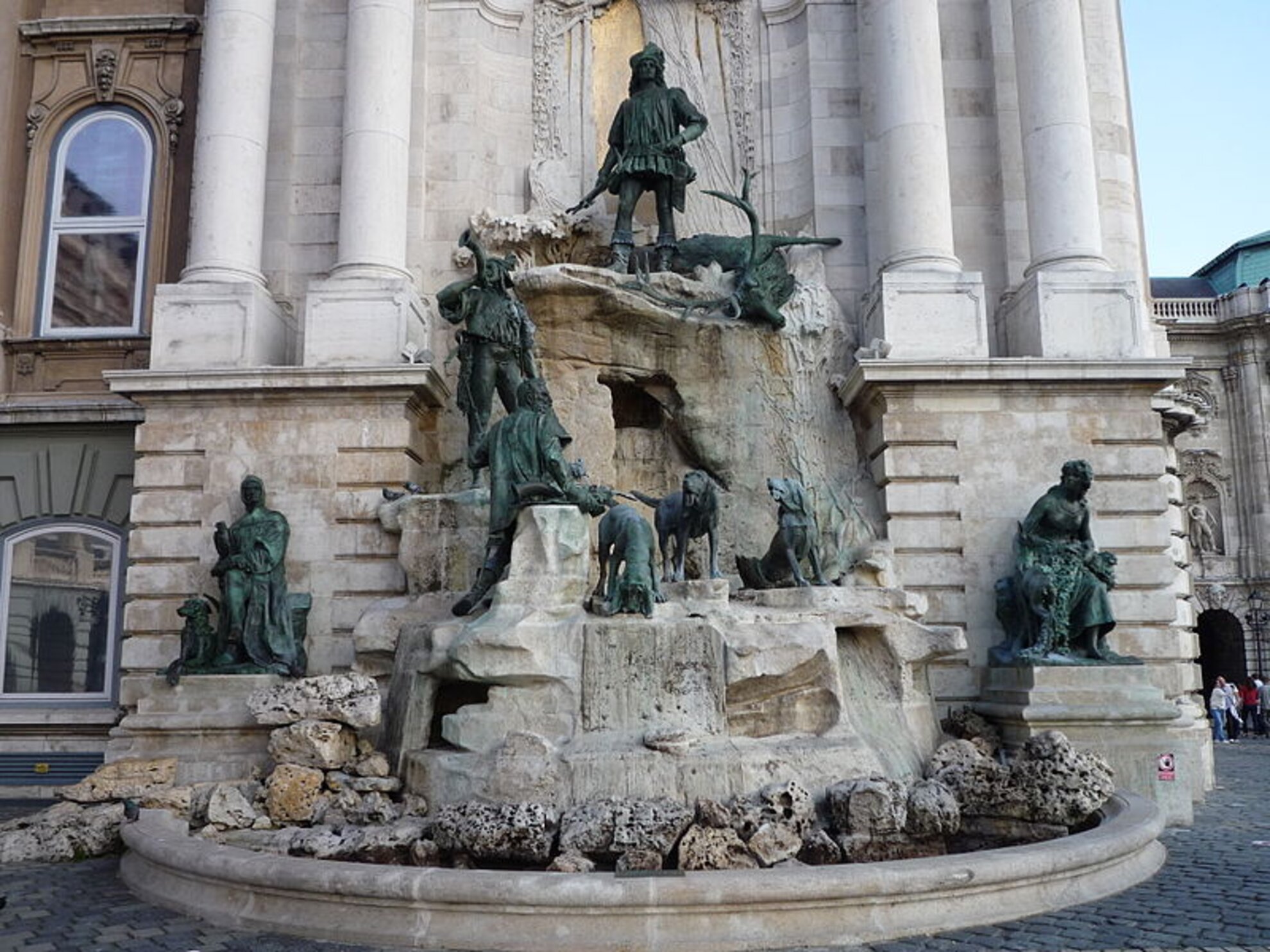
After the original suffered extensive damage in WWII, Buda Palace was rebuilt in baroque style and is a prime example of Habsburg architecture. Today it is now home to the Hungarian National Gallery, the National Archives of Hungary, the Budapest History Museum and the Széchenyi Library. If you have time you might want to explore one of these, although properly going through each will take more than one visit.
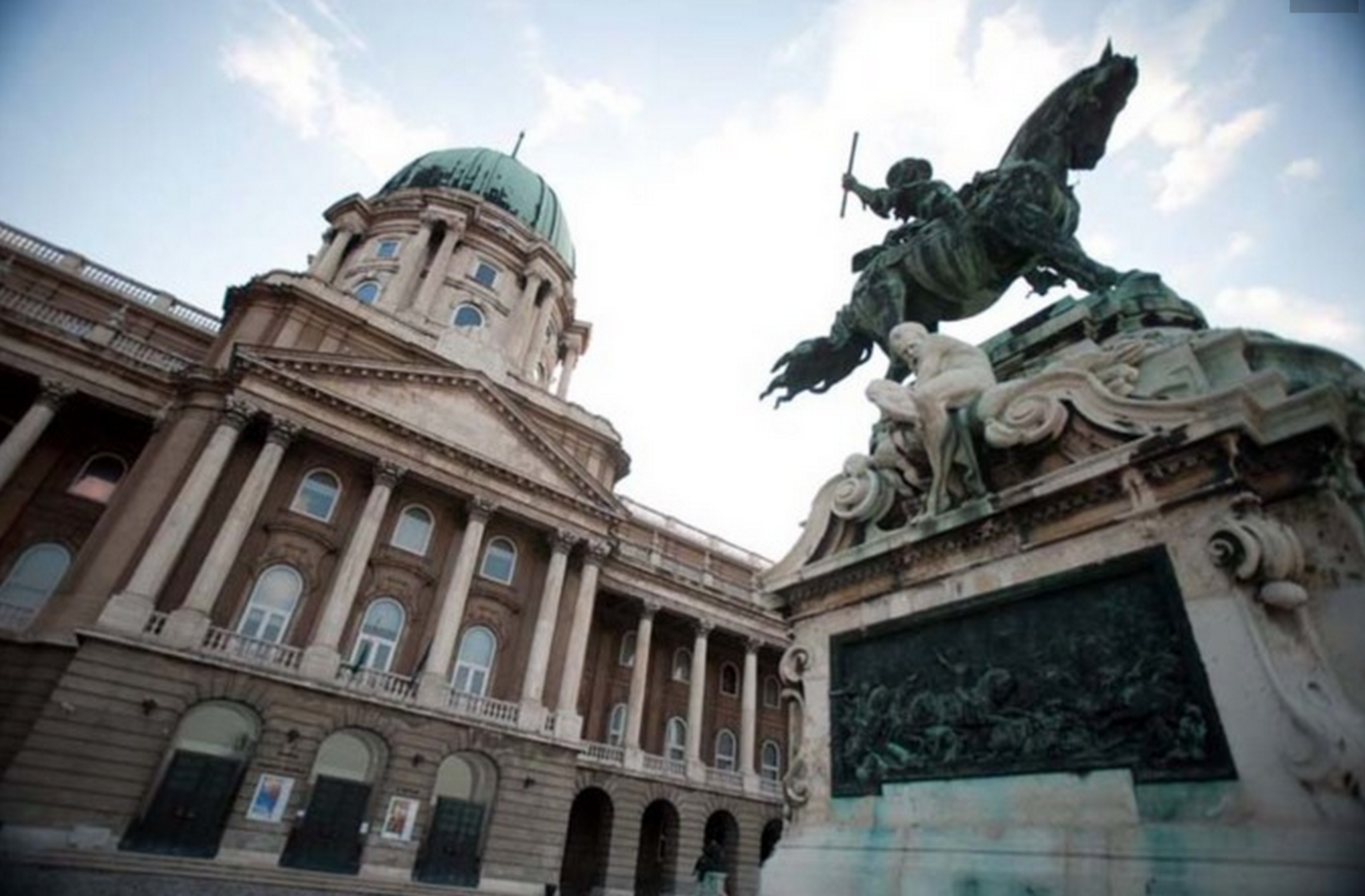
If you still have time and energy and you'd like to see more of this area, you could explore the underground sights. There's Buda Labyrinth near the Holy Trinity Square or explore 20th century history in the Hospital in the Rock.Where to eatAside from a number of touristy restaurants of varying price and quality, there are some spots in the Buda Castle District that we can recommend. The Fishermen's Bastion Restaurant boasts stunning views and delicious food, while 21 Restaurant serves sublime Hungarian cuisine with a twist.
For sweets or a coffee break we must mention Ruszwurm - a confectionery with delightful cakes and an interior with splendid old-world charm. The krémes (cream-filled pastry like a Vanilla Slice) here is a must!The funicularFor some, getting down from the Castle District is half the fun! A ride on the funicular has a small fee, and the view is great - if fleeting. The funicular is something you have to try at least once! For those who are not finished with walking, you can also take one of the paths down the side of Castle Hill to return to Clark Ádám Square and the foot of the Chain Bridge.
